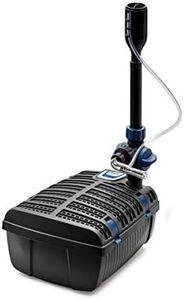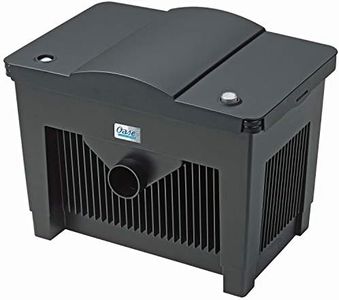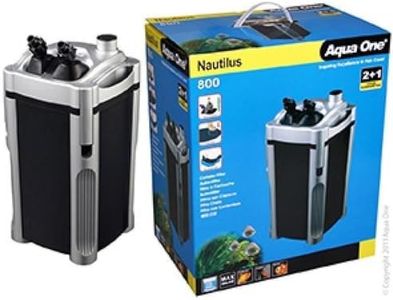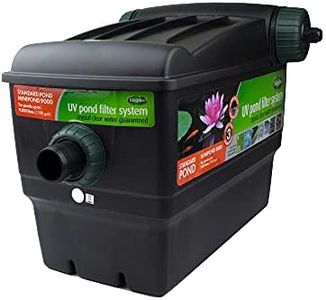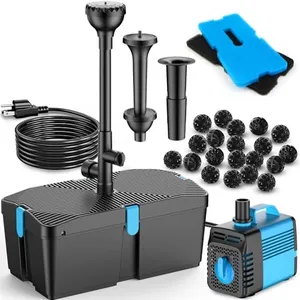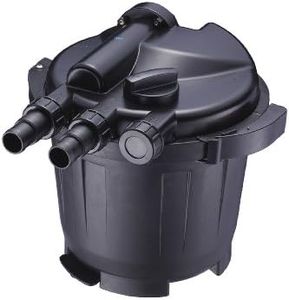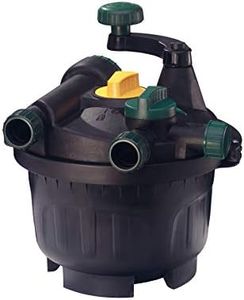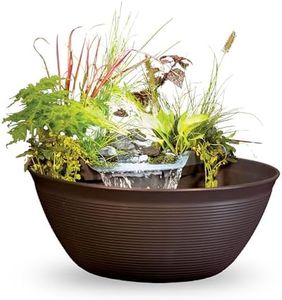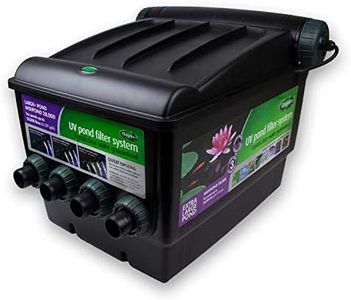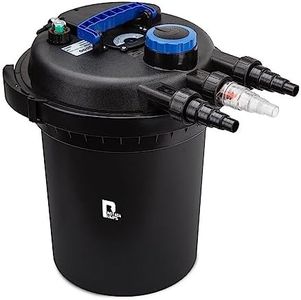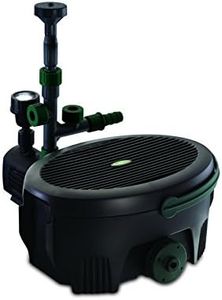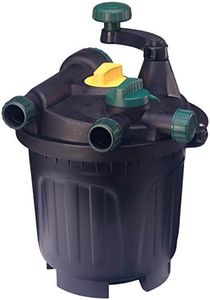We Use CookiesWe use cookies to enhance the security, performance,
functionality and for analytical and promotional activities. By continuing to browse this site you
are agreeing to our privacy policy
10 Best Pond Filters
From leading brands and best sellers available on the web.By clicking on a link to a third party's website, log data is shared with that third party.
Buying Guide for the Best Pond Filters
Choosing the right pond filter is crucial for keeping your pond water clear, healthy, and safe for both aquatic life and plants. Filters help remove debris, waste, and harmful substances. When shopping for a pond filter, it's important to think about the unique needs of your pond, such as size, the number of fish, and whether your pond gets direct sunlight. Understanding the key features will help you decide which filter is the best fit for your setup.Filter TypePond filters come in different types: mechanical, biological, and UV (ultraviolet) filters, and sometimes a combination of these. Mechanical filters physically trap debris, biological filters use beneficial bacteria to break down toxins, and UV filters help control algae bloom by killing microorganisms with light. Understanding what each type does is important because each addresses different pond problems. If your main issue is visible debris, a mechanical filter is essential. For ponds with a lot of fish or persistent green water, biological or UV filtration will help more. You should choose a filter or combination based on the problems you’re likely to have in your pond.
Pond Size CapacityThis spec tells you the maximum volume of water the filter can effectively clean, usually measured in gallons or liters. It is important because a filter that’s too small won’t keep the water clean, while an oversized one may be unnecessarily costly or inefficient. You can navigate this by measuring your pond’s water volume and matching it with the filter’s rating. For lightly stocked ponds with few fish, you can use the claimed maximum capacity. For ponds with many fish or heavy plant life, or if the pond is in direct sun, it’s often wise to choose a filter rated for a larger volume than you actually have to handle extra waste and algae.
Flow RateFlow rate refers to how much water the filter can process in a given time, often measured in gallons per hour (GPH) or liters per hour (LPH). This is important because it affects how quickly your pond water cycles through the filter, which impacts cleanliness and oxygen level. Lower flow rates suit small, peaceful ponds, while higher rates are needed for larger, more active ponds, especially those with many fish. A good rule is to choose a filter that can circulate all the water in your pond at least once every hour or two. Adjust based on your pond’s needs: more flow is needed for koi or heavily stocked fish ponds.
Maintenance RequirementsSome filters are easier to clean and maintain than others. This spec is important because filters need regular cleaning to stay effective; a filter that’s hard to clean might lead you to neglect maintenance. Simple, easily accessible filters are best for busy people or beginners. More complex filters may offer better filtration but may require more effort. If you prefer less maintenance, look for filters with easy-clean features or backwash systems. Always consider how comfortable you are with routine maintenance when making your decision.
Installation TypeFilters can be installed above ground (external), submerged under water (internal), or integrated into waterfalls or pond edges. This matters because some ponds are designed for subtlety, while others may prioritize space or appearance. Internal filters work well for small, shallow ponds where concealment is important. External and pressurized filters are usually more powerful and easier to access but require space outside the pond. Consider your pond’s design, the space available, and whether you want the filter to be visible or hidden.
